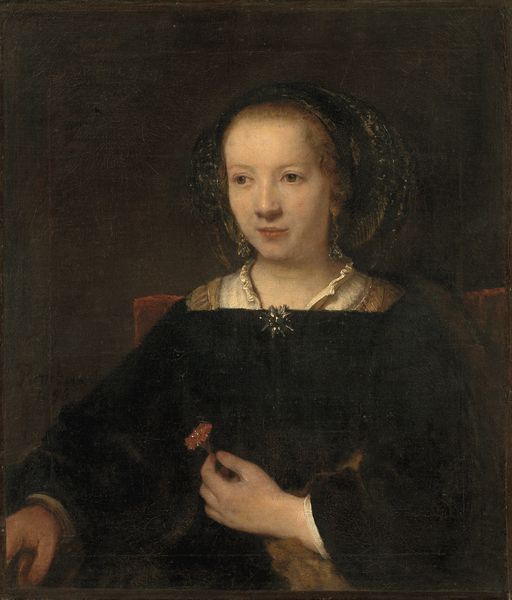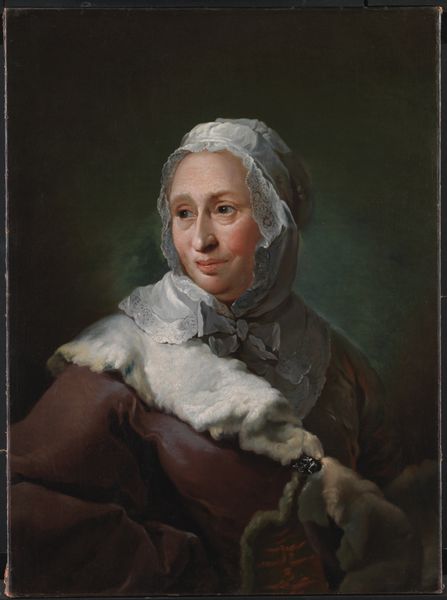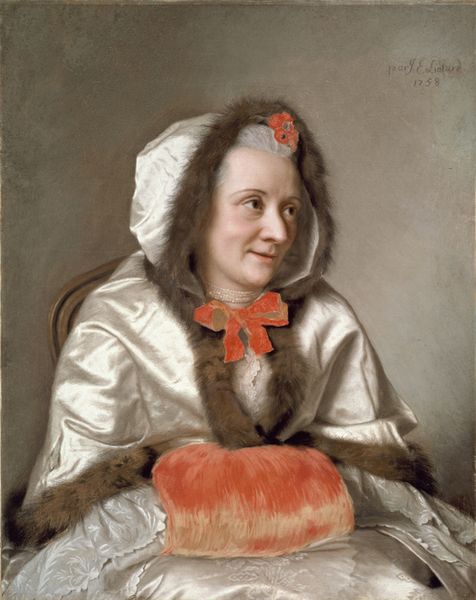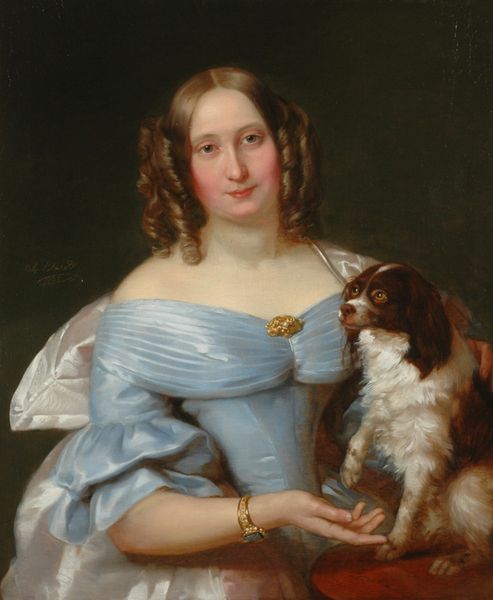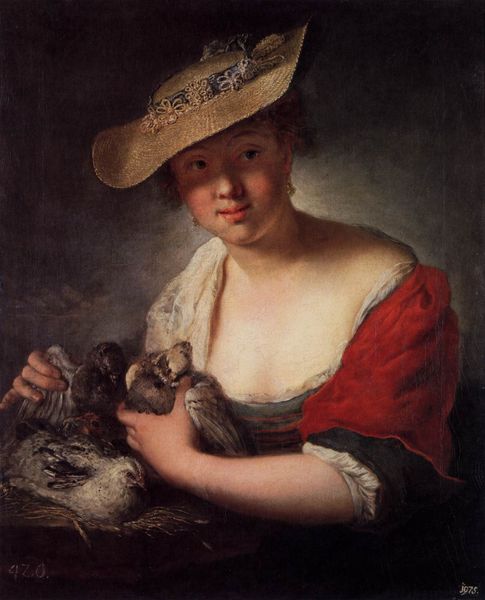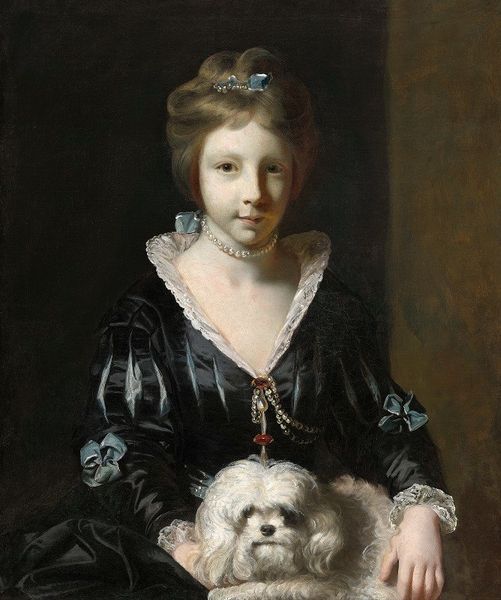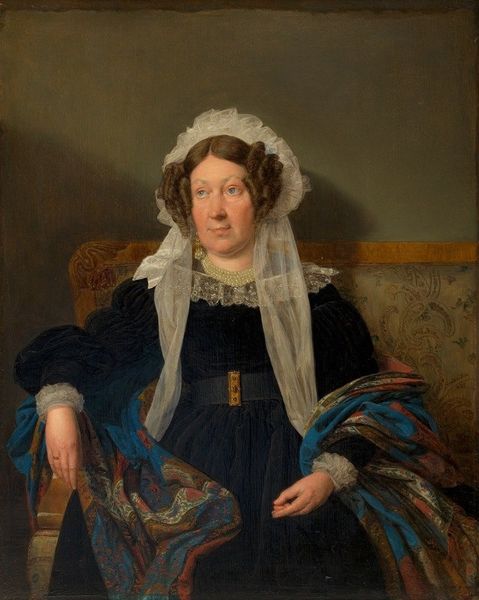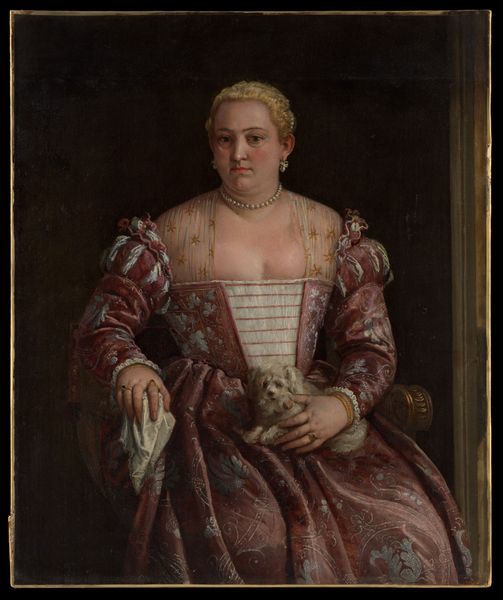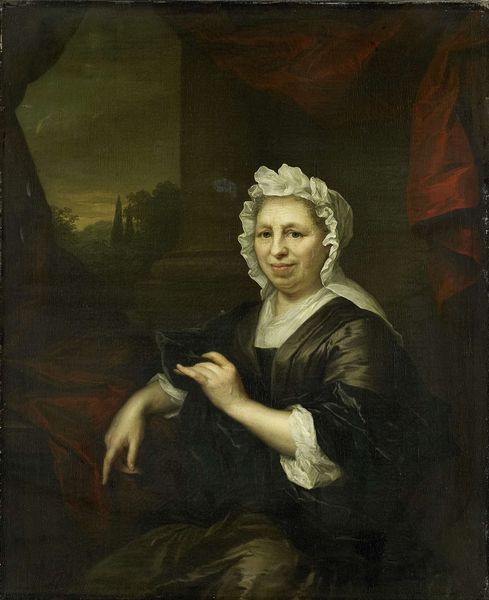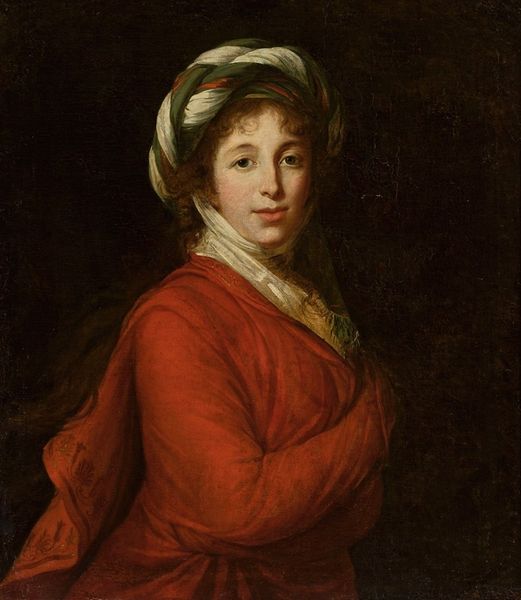
painting, oil-paint
#
portrait
#
baroque
#
painting
#
oil-paint
#
oil painting
#
portrait drawing
#
genre-painting
#
portrait art
#
realism
Dimensions: 81 × 64.5 cm (31 7/8 × 25 3/8 in.)
Copyright: Public Domain
Curator: Looking at this canvas, one gets an immediate sense of… restraint, almost melancholy, wouldn't you say? Editor: Yes, there’s a certain stillness. I find it fascinating. We’re looking at "Portrait of a Lady," an oil painting created sometime between 1725 and 1750. It's currently housed here at The Art Institute of Chicago. What can you tell me about the woman in this portrait? Curator: Given the social and political hierarchies of the time, her clothing subtly speaks to her station. The details of her cap, her fur trim, and that substantial bow suggests she is certainly part of a privileged class. The blue and pink drapery adds a sense of visual richness. However, these very markers could have, ironically, restricted her freedoms and voice within that society. Editor: Absolutely. Portraits like this served a specific function in constructing social identity. We need to consider the institutions that perpetuated such imagery and what purposes it served. This Baroque painting might seem like just another portrait, but it reinforces ideas of status, gender roles, and the public performance of identity within that era. Curator: It’s intriguing how she clasps her hands, a seemingly demure pose, but is it genuine meekness or a performance expected of her? This image provides a snapshot of womanhood, yet the woman’s individual experience likely was very complex, perhaps resistant to easy classification. Also, you can see she’s meeting our gaze; a knowing look and hint of defiance? Editor: I'd argue that examining who was excluded from these artistic narratives is vital, too. Whose stories weren't being told through official portraits? The painting reflects a system of power, so interpreting it becomes a form of social critique. Curator: So true! To look at this painting is to confront a whole world of expectations and assumptions. It encourages us to dissect the visible signs of identity but also, what remains invisible in the context of the Baroque era. Editor: It shows us how much more work we must do in understanding both the beauty and limitations of the images shaping our understanding of history.
Comments
No comments
Be the first to comment and join the conversation on the ultimate creative platform.
